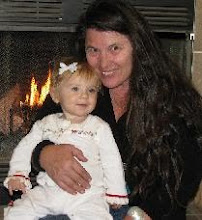Metaphors of Educators (Siemens, 2008)
Although all four metaphors have elements that are valuable in an active, hands-on, inquiry, critical thinking, project-based learning environment of constructivism and connectivism, I was attracted to the curator educator. The teacher as curator expert can be the most effective guide for students with application and relevancy issues. The greatest challenge for this teacher will be to keep the breaks on themselves, not be tempted to answer student questions as much as to find creative ways to draw the students into exploration, research, critical thinking, and seeking their own answers. The curator may choose to use tools mentioned in the other metaphors such as the atelier model from the master artist, soft guidance from the concierge, and network administration guidance.
The effectiveness of these teaching strategies are not new, are well substantiated in research, but in my experience at traditional and charter public schools, are not being practiced in the secondary classrooms. The five high school academy science teachers that I am working with are really being stretched to even consider “inqurizing” their recipe-type labs. We also had a discussion this week about going textbook-less in our LMS Moodle curriculum, and that was unimaginable to them – they still wanted some version of some textbook. My view is to integrate technologies with Module themes, have open networking among teacher and students (like we practice at Walden), dig deep in the main topic for an entire semester and culminate it with a project, chosen and researched by the student. Instead of teaching to the state test, let the students dig deep and learn from non-lecture based classroom environments with a curator type teacher facilitating the process.
Here’s a video resource for “Teaching High School Science” from Annenberg Media (http://www.learner.org/resources/series126.html#) using different levels of inquiry, getting the students to formulate their own questions from their observations and prior knowledge, and to design their own experiments. This kind of resource is very helpful for teachers to model how they can conduct the same lab at different levels of inquiry and critical thinking challenges for the students – teacher’s choice!!
References:
Siemens, G. (2008, January 27). Learning and knowing in networks: Changing roles for educators and designers. Paper presented to ITFORUM. Retrieved from http://it.coe.uga.edu/itforum/Paper105 /Siemens.pdf
Siemens, G. (2005, April 5). Connectivism: A learning theory for the digital age. http://www.elearnspace.org/Articles/connectivism.htm.
Ertmer, P. & Newby, T. (1993). Behaviorism, cognitivism, constructivism: comparing critical features from an instructional design perspective. Performance Improvement Quarterly, 6 (4): 50-72 retrieved online from http://uow.ico5.janison.com/ed/subjects/edgi911w/readings/ertmerp1.pdf.
Subscribe to:
Post Comments (Atom)

Hi Marlene,
ReplyDeleteWe both choose the same role that we would like the instructor to take on; the instructor as curator. In my winter and summer modules teaching web design classes in a community college, I always use the “curator” approach with success. This winter module, my students will be part of service-learning, creating a website for nonprofit organization. Before they worked on personal projects, this is the first time they will be designing and incorporating research for an outside organization. It will be an interesting experience for me!
Orit
Marlene- first let me apologize for the lack of timeliness of my response; my mother in law has been in ICU for a couple of weeks and trying to keep up in class is a bit difficult right now. Now, on the topic of your blog posting I found one sentence extremely thought provoking and interesting. The greatest challenge for this teacher will be to keep the breaks on themselves, not be tempted to answer student questions as much as to find creative ways to draw the students into exploration, research, critical thinking, and seeking their own answers. I liked this sentence the most because it shows not only your understanding that students learn most when they have to be actively involved in their learning. And, when the teacher is too present in online education they can really detract from the process of students teaching each other. I also really appreciated your openness and writing style. I believe you are on the right track and I look forward to interacting with you more in the future.
ReplyDeleteKassidy